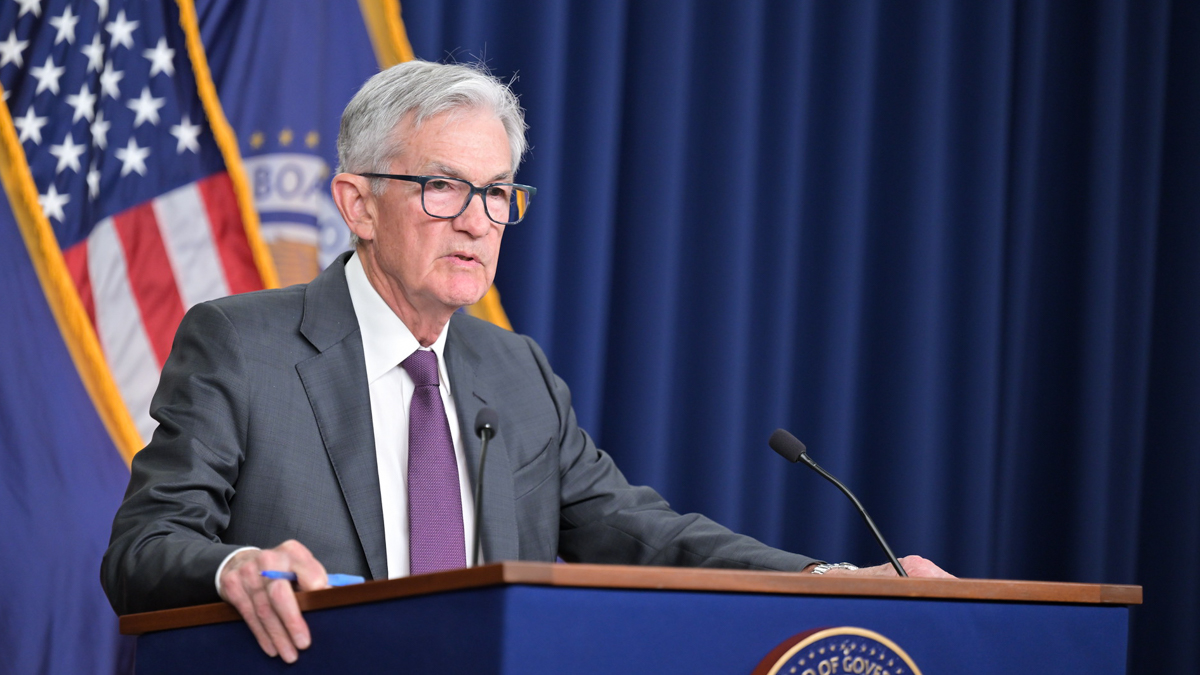During his recent testimony before the US Congress, Federal Reserve chair Jerome Powell issued a strong warning about the increasing cost and decreasing availability of property and rental insurance as a result of climate-related risks.
The increasing risks of climate change, Powell observed, are causing banks and insurance companies to withdraw from certain areas of the country. If one were to “fast-forward 10 or 15 years, there are going to be regions of the country where you can’t get a mortgage, there won’t be ATMs, banks won’t have branches and things like that”.
Given this alarming answer, one might hope the Fed is working assiduously with its domestic and foreign counterparts in the central banking and financial regulatory communities to address the fact that entire regions of the US are becoming increasingly unbankable, uninsurable and uninhabitable.
Instead, it has done the opposite. In what looks by all appearances to be an attempt to placate the anti-climate views of the Trump administration, it has withdrawn from the Network for the Greening of the Financial System (NGFS), the global coalition of central banks dedicated to addressing the financial implications of climate change.
The Fed’s latest abdication of its responsibilities is unjustified on the merits, will put the US government and financial sector at an economic and competitive disadvantage, and threatens to undermine the US central bank’s long-term credibility.
This act is just one more failure of leadership from an institution whose indifference to the growing climate crisis has been as consistent as it has been disappointing. The Fed’s latest abdication of its responsibilities is unjustified on the merits, will put the US government and financial sector at an economic and competitive disadvantage, and threatens to undermine the US central bank’s long-term credibility.
Did the Fed leave the NGFS, or did the NGFS leave the Fed?
Powell has claimed the timing of the Fed’s NGFS withdrawal was a coincidence, the withdrawal process had been in the works for months if not years, and despite appearances the decision was “really not driven by politics”. Even at face value, that claim is dubious.
The Fed’s time as an NGFS member coincides almost perfectly with the Biden presidency: it joined the network in December 2020 a few weeks before Joe Biden was inaugurated, and left a few days before Donald Trump took office for a second time. Given the vastly different approaches to climate risk between the two administrations, it beggars belief that the timing was coincidental.
The Fed’s arguments for leaving the NGFS centre on what Powell called the “disconnect” between the NGFS’s charter and the Fed’s legal mandates. Specifically, Powell said the “work that the NGFS does has broadened very significantly” to include “nature-related risks and biodiversity” is “in significant part intended to – and this is a quote [from the NGFS] – ‘mobilise mainstream finance to support the transition toward a sustainable economy’.”
As a result, Powell argued, the NGFS’s work was “just way beyond any plausible mandate that you could attribute to the Fed”, and therefore the “activities of the NGFS are not a good fit for the Fed, given our current mandate and authority”.
But these aspects of the NGFS’s work are not new. In fact, many of them existed prior to the Fed joining the coalition in 2020. The NGFS’s first reports on its work in 2018 and 2019 were clear that its goals encompass supporting sustainable finance, including “scaling up green finance” and “mobilis[ing] capital for green and low-carbon investments consistent with the Paris Agreement”.
Even assuming one were to take the Fed’s argument about the NGFS’s mission at face value, it’s not clear that leaving the coalition is the appropriate response.
The Fed participates in many other multilateral coordinating bodies with other central banks that are subject to differing legal mandates and authorities. Like those other forums, none of NGFS’s work is binding on its member agencies’ domestic agendas, so it would be entirely appropriate for the Fed to implement only those aspects of the NGFS’s work that are consistent with US banking and financial law.
Even assuming one were to take the Fed’s argument about the NGFS’s mission at face value, it’s not clear that leaving the coalition is the appropriate response.
Of course, the problem for the Fed is that much of the NGFS’s work falls well within the scope of US law.
As observers have argued ad nauseum, the Fed’s statutory authorities and mandates include preserving the safety and soundness of banks and bank holding companies, maintaining the stability of the financial system, and ensuring that banks meet the needs of their communities. Climate change is implicated in all of these areas.

For example, Powell’s belief that climate change will make entire regions effectively un-bankable will mean that banks will no longer be willing or able to serve communities they’re obligated to serve. Alternatively, it would undermine the safety and soundness of community and regional institutions which can’t afford to pull out of those areas.
But rather than remain in coalition with its international counterparts dedicated to addressing these issues, the Fed has taken its ball and gone home.
Leading from behind
Through their actions and inaction, US policymakers are undermining the stability and the competitiveness of the US financial system.
The NGFS withdrawal is of a piece with the Fed’s trend of international disengagement on climate change, specifically and regulation and financial stability more broadly. It is also consistent with the Trump administration’s general retrenchment from multilateral coordinating bodies, as other US bank regulatory agencies – the Office of the Comptroller of the Currency and the Federal Deposit Insurance Corporation – joined the exodus from the NGFS. Wall Street banks have taken the hint and abandoned their own voluntary commitments to facilitate a transition toward a net-zero economy.
After the global financial crisis of 2007-09, the US often played a leading role in setting minimum but non-binding global standards for financial regulation. US banks had been subject to stronger standards before the crisis and raised capital afterwards, allowing them to expand when their international competitors were cutting costs. Far from being a hindrance, the role of the US as a driving force behind stronger financial standards proved to be a source of competitive strength for the country’s banks.
This experience should have demonstrated the value of global leadership and the benefits of winning a race-to-the-top. The Biden administration, in which I served, recognised that the energy transition “presents generational opportunities to enhance US competitiveness and economic growth” while the “failure of financial institutions to appropriately and adequately account for and measure these physical and transition risks threatens the competitiveness of US companies and markets”.
It is a cruel irony that, after helping to intensify the push towards an energy transition by enacting the Inflation Reduction Act and other policies, the US is now choosing to put itself at a competitive disadvantage.
Instead, policymakers and financial executives seem determined to relegate the US to the role of laggard in the competition to finance the climate transition.
It is a cruel irony that, after helping to intensify the push towards an energy transition by enacting the Inflation Reduction Act and other policies, the US is now choosing to put itself at a competitive disadvantage.
It is also a shame that the US would cede leadership over such a consequential issue. But the rest of the world will not wait for the US to come to its senses and get its domestic politics in order, and rightfully so. Foreign governments, manufacturers and banks will be more than happy to pass the US by. At the same time, much as the Trump administration might like to ignore them, the economic costs of climate change will only continue to increase.
Unlearning the lessons of central bank legitimacy and independence
Ultimately, the Fed’s withdrawal from international engagement on climate finance is likely to prove self-defeating.
If you talk to seasoned Fed observers about the central bank’s actions, they will point out that it is taking prudent steps to minimise its political risk in order to safeguard its independence in setting monetary policy, thereby maintaining its legitimacy as an institution.
But seen in a different light, the Fed’s abdication actually risks undermining its institutional legitimacy.
Nothing has undermined the Fed’s legitimacy and threatened its independence more than its supervisory and regulatory failures that contributed to the financial crisis. Before the crash, the Fed dismissed concerns raised by academics and community groups about unregulated derivatives and subprime lending, and underestimated the potential for those exposures to undermine financial stability.
As a result of the Fed’s myopic thinking, what seemed like relatively isolated risks quickly became a disaster. In failing to fully appreciate the potential risks of climate change, and its responsibility to mitigate such risks, the Fed’s current approach is reminiscent of the pre-crisis period.
Fed chairs who cannot remember the past are condemning all of us to repeat it.
Prior to 2007, former Fed chair Alan Greenspan dismissed concerns about financial risk as “extremely remote”, while adding that risk is “part of life”. In his recent congressional testimony, Powell was similarly sanguine when asked about climate change, saying he didn’t “know if it is a financial stability issue”, even though he acknowledges that increasing numbers of US citizens are being denied financial services due to escalating climate impacts.
Fed chairs who cannot remember the past are condemning all of us to repeat it.
The Fed’s decision to ignore climate risk is part of a troubling trend of capitulating to short-term partisan interests. It has in large part disbanded any work relating to diversity, equity, and inclusion or DEI following President Trump’s executive order requiring agencies to do the same, despite the fact the Fed is ostensibly politically independent from the White House.
It is simply not plausible to think that the Fed’s actions are driven by anything other than a desire to stay in the good graces of a White House and Congressional majority that are hostile to ESG issues.
While these concessions appear calculated to preserve institutional independence on matters of monetary policy, the Fed has instead plunged into a thicket of politics from which it may have difficulty eventually removing itself.
Featured image: Jerome Powell said the decision to leave the Network for Greening the Financial System was ‘really not driven by politics’. © Federal Reserve


